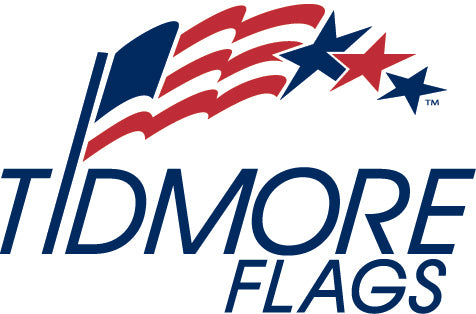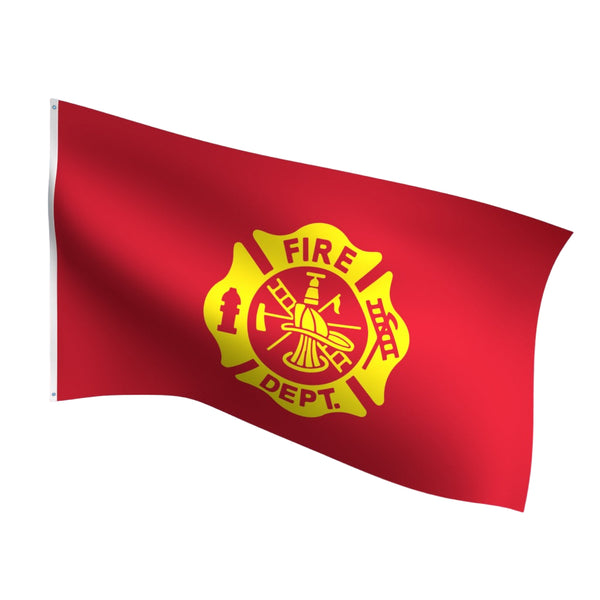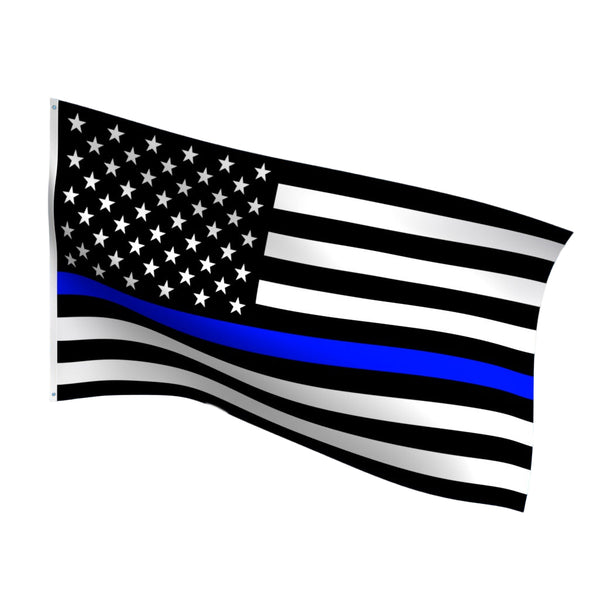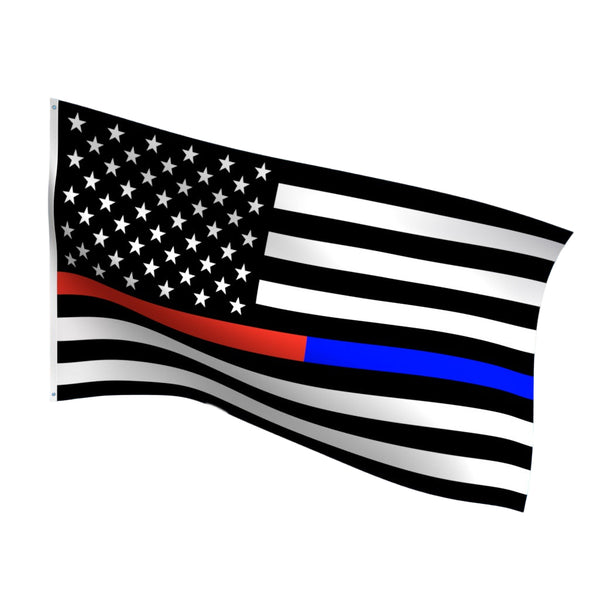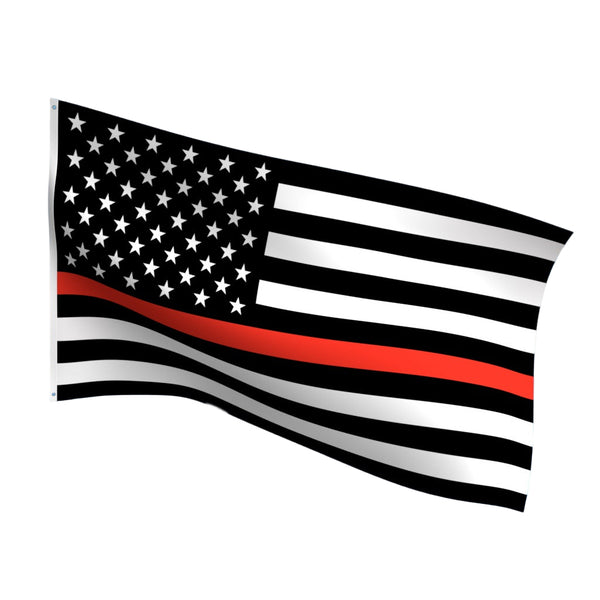First Responder Flags: Meaning, Etiquette, and How to Display Them
Share
Picture your main street on a quiet evening. Porch lights flicker on. A breeze lifts a set of colors—black and white bars with a single bold stripe—while neighbors pause and nod. That simple moment is the power of first responder flags: they’re a personal, visible “thank you” to the people who run toward danger when everyone else runs away.
In this guide, you’ll learn what first responder flags represent (the thin blue line flag, the thin red line flag, and the firefighter’s flag), how to choose the right one, where to display it with proper etiquette, and why it matters more than ever. You’ll also get a quick buyer’s checklist, a short story that brings it all to life, and a practical FAQ to clear up common questions—plus a direct path to high-quality, USA-made flags at the end.
What These Flags Mean (Thin Blue, Red Line, and Firefighter’s Flag)

The Thin Blue Line Flag: Support for Law Enforcement
The thin blue line flag is most commonly a black-and-white American flag with a single blue stripe. The “blue line” symbolizes the role of law enforcement officers standing between order and chaos—serving and protecting their communities. Displayed respectfully, it communicates solidarity, remembrance, and gratitude.
The Redline Flag / Firefighter’s Flag: Courage and Sacrifice
You’ll hear two phrases used for the firefighter design: redline flag and firefighter’s flag. In many cases, they refer to the same concept—a black-and-white field with a single red stripe—recognizing firefighters’ bravery, readiness, and sacrifice. You’ll also see

firefighter’s flags that incorporate the Maltese Cross, ladder/helmet elements, or a department logo; these versions are popular for stations, memorials, and ceremonies.
Bottom line: Thin blue line = law enforcement. Red line = fire service. Both are ways to honor, remember, and support first responders—at home, at city facilities, or during community events.
A Short Story: How a City Came Together Around Its First Responders
When the new municipal complex opened downtown, the city planned a small ceremony—just some remarks and ribbon cutting. But a week earlier, a fire crew had worked through the night to stop a warehouse blaze from reaching nearby homes, and the police had coordinated evacuations with calm precision.
On event day, the mayor added one change: a flag presentation. An honor guard posted the U.S. flag, then a firefighter’s flag with a Maltese Cross, and finally a thin blue line flag. A local high-schooler read a brief statement about what the stripes meant. By the end, the applause wasn’t for the building—it was for the people.
Departments received duplicates of each flag to display at their stations. Weeks later, residents started flying their own, and the city added indoor presentation flags for council meetings and promotions. A small symbolic act turned into a community tradition.
Where and How to Display (Etiquette That Respects the U.S. Flag)
First responder flags are often paired with the U.S. flag. Here’s how to do it right:
- Order of precedence: When flown on separate poles, the U.S. flag should be in the position of honor (highest and/or to the observer’s left).
- Same pole? If your jurisdiction allows only one pole, do not fly another flag above the U.S. flag. Use a separate pole or display the first responder flag indoors or on a wall.
- Lighting & weather: Follow standard U.S. Flag Code guidance. If flying at night, illuminate; in severe weather, take down or rotate to a spare.
- HOA or building rules: Some HOAs and facilities limit non-U.S. flags. If that’s you, display indoors, in a window, or on a porch kit that aligns with your rules.
- Memorial observances: For Line-of-Duty memorials, pair respectfully with the U.S. flag and consider black mourning ribbons on indoor sets.
Question for you: Will your display be outdoor everyday, indoor ceremonial, or event-only? Your answer determines fabric, size, and hardware.
U.S. Flag Etiquette and Display Rules
How to Choose the Right Flag (Materials, Sizes, and Hardware)
Material matters—especially for wind, sun, and salt.
- Nylon (outdoor): Lightweight, quick-drying, flies easily in light to moderate winds—great all-around choice for residential and storefront use.
- Heavy-duty 2-ply polyester (outdoor): The best pick for coastal, windy, or harsh conditions; thicker weave resists fray better.
- Indoor ceremonial (pole hem & fringe): For stations, city halls, schools, and promotions; pair with a hardwood or aluminum pole, an eagle or spear ornament, tassels, and a weighted stand.
Size & Pole Cheat Sheet (Quick List)
- 2′×3′ → 10′–15′ wall-mount/short poles
- 3′×5′ → Most common for homes & small buildings; 15′–20′ poles
- 4′×6′ → 20′–25′ poles; larger presence for businesses
- 5′×8′ → 25′+ commercial sites, stations, or campuses
- Indoor sets: Typically 3′×5′ pole-hem & fringe on 7′–8′ poles with weighted stands
Hardware tips: Use quality spun aluminum or fiberglass poles outdoors; for wall mounts, choose sturdy brackets and stainless hardware. Indoors, store ceremonial flags in protective sleeves to avoid fringe damage.
Why These Flags Matter (Community, Morale, and Memory)
- Community solidarity: A visible sign that you value those who protect and serve.
- Morale & recognition: Departments feel the difference when their community displays support at stations, schools, and businesses.
- Memorial & honor: For line-of-duty or anniversary observances, flags unite people with dignity and clarity.
- Education: Proper displays spark conversations—especially with kids—about service, sacrifice, and civic responsibility.
Care Tips to Extend Flag Life (Easy Wins)
- Rinse salt spray (coastal/city grime) and let it dry fully before rehanging.
- Trim the fly-end early at the first sign of fray to prevent tears from spreading.
- Rotate a spare during storm or peak-sun months to reduce UV and wind stress.
- Avoid rough surfaces (brick, branches, shingles) that abrade fibers.
- Use proper hardware—free-spinning mounts help reduce tangling and wear.
Quick Buyer’s Checklist (Copy & Save)
- Purpose: Everyday outdoor, indoor ceremonial, or special events?
- Material: Nylon (all-around) or 2-ply polyester (windy/coastal).
- Size: Match your pole height; 3′×5′ fits most homes.
- Display rules: Pairing with the U.S. flag? Confirm order of precedence.
- Hardware: Wall mount, in-ground, or indoor stand—with the right ornament.
- Care plan: Spare flag for rotation, scissors for quick fly-end trims, and light for night display.
- Origin: Prefer Made in the USA for durability and colorfastness.
FAQ: First Responder Flags, Answered
Is the thin blue line flag legal to fly?
Yes—there’s no federal prohibition on displaying a thin blue line flag or a thin redline flag. Always follow the U.S. Flag Code for displays that include the American flag and comply with local/HOA rules.
Can I fly a thin blue line flag on the same pole as the U.S. flag?
Best practice: separate poles. If only one pole is permitted, keep the U.S. flag alone on that pole per Flag Code guidance, and display the first responder flag on another mount or indoors.
What’s the difference between a redline flag and a firefighter’s flag?
Often, “thin red line flag” is a style (black/white bars with a red stripe), while “firefighter’s flag” can be that design or a flag featuring the Maltese Cross and other fire-service insignia. Both honor firefighters; choose the style that fits your setting.
What size should I buy for a house?
3′×5′ is the most common for homes on a 15′–20′ pole or wall-mount bracket. Larger buildings or campuses often choose 4′×6′ or 5′×8′.
Nylon or polyester—what lasts longer?
For harsh winds or coastal sun, 2-ply polyester typically outlasts nylon. For everyday conditions and easier flying in light wind, nylon is excellent.
How do I display first responder flags indoors for ceremonies?
Choose an indoor pole-hem & gold fringe flag, a 7′–8′ pole, an eagle/spear ornament, tassels, and a weighted stand. Store with a protective sleeve to protect the fringe.
How do I respectfully retire a worn first responder flag?
Retire like any flag—fold and dispose respectfully. Ask local departments, VFW posts, or scout troops if they have a ceremony; replace with a new flag promptly.
A Moment That Sticks (Why Your Flag Will Be Noticed)
At a small-town awards night, the program ran long. People shifted in their seats—until the honor guard stepped in with an indoor firefighter’s flag and a thin blue line flag. The room rose, quiet and steady. No speeches were needed; the flags said it all. One family bought a 3′×5′ redline flag the next day. “It’s for our porch,” they told the clerk. “We just want them to know.”
Ready to Choose Yours?
Whether it’s a thin blue line flag for law enforcement, a thin red line flag to honor firefighters, or a formal firefighter’s flag with pole hem and fringe for ceremonies, pick a flag that matches your purpose, conditions, and hardware. You’ll get richer color, longer life, and a display that feels right—at home, at the station, or on your campus.
